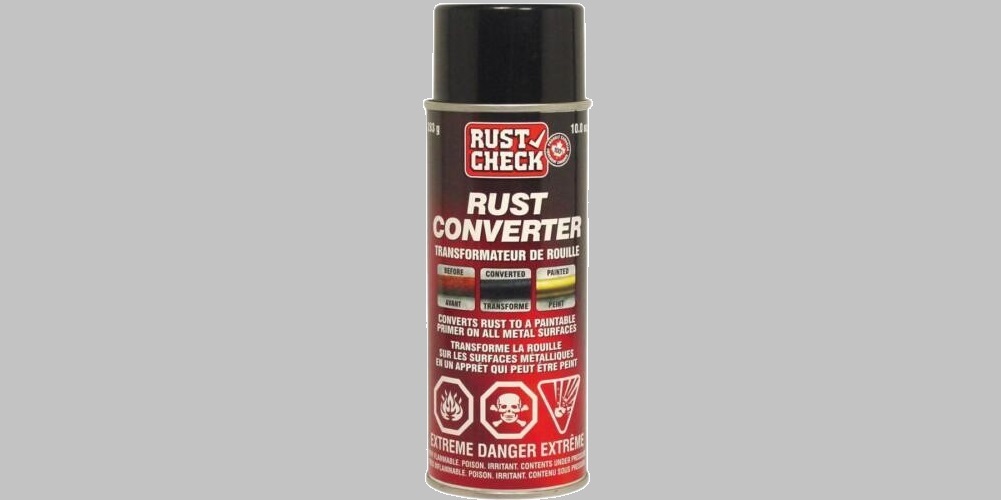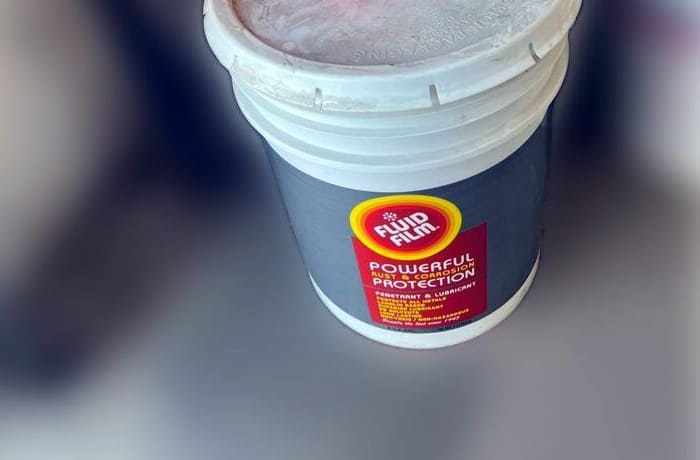Protecting your vehicle from rust and corrosion is essential, especially in harsh environments. Two popular solutions in the market are Fluid Film and Rust Check.
Fluid Film is well-known for its lanolin-based formula, a natural wax extracted from sheep’s wool. This product offers excellent rust and corrosion protection without using solvents, making it environmentally friendly.
It’s particularly favored for penetrating rusted parts and creating a protective barrier that resists moisture and corrosion.
On the other hand, Rust Check takes a slightly different approach with its customizable options, including drip and dripless formulas.
This adaptability makes Rust Check versatile for various types of metal protection, from cars to industrial equipment. It’s designed to seep into the tiniest crevices, providing a reliable defense against the onset and spread of rust.
If you’re looking to safeguard your classic car, understanding the nuances of Fluid Film and Rust Check will guide you to the right choice.

Table of Contents
1. Chemical Composition
Fluid Film
Key Ingredients and Corrosion Inhibiting Properties
Fluid Film stands out in the automotive corrosion prevention market primarily because of its use of lanolin. This natural ingredient is safe for the environment and highly effective at creating a barrier against moisture.
The waxy nature of lanolin ensures that it clings to metal surfaces, even under wet conditions, preventing water and oxygen from starting the rusting process.
Oil-Based, Solvent-Free Composition
Fluid Film’s oil-based, solvent-free composition doesn’t evaporate or dry out, which is crucial for long-term protection.
This characteristic makes it particularly useful for vehicles in coastal or humid climates where salt and moisture are persistent threats.
Rust Check
Key Ingredients and Corrosion Inhibiting Properties
Rust Check utilizes a blend of inhibitors and oils designed to displace moisture and seal out water. The formula’s effectiveness lies in penetrating existing rust and preventing new rust from forming.
This makes it ideal for older vehicles that might already show signs of corrosion but need preservation against further damage.
Drip and Dripless Formulas Available
Rust Check is available in drip and dripless options, catering to user preferences and application needs. The drip formula is particularly effective for reaching hard-to-access areas, ensuring full coverage and protection.
The dripless version is less messy and better suited for a quick, clean application. It is often preferred for newer vehicles or for maintaining a cleaner work environment during application.

2. Application Process
Fluid Film
Effortless Application Steps
Applying Fluid Film is straightforward and requires minimal surface preparation. The process involves cleaning the surface of dirt, grease, and loose rust and spraying or brushing the product onto the area.
Fluid Film’s thick consistency allows it to adhere well to surfaces without dripping excessively, making it easy to apply even for beginners.
Best Practices for Optimal Results
For best results, Fluid Film should be applied in a well-ventilated area, avoiding direct sunlight, which can cause uneven drying.
The product performs optimally in cooler, moisture-free environments. Regular application, especially after exposure to severe conditions, can significantly extend the protection period.
Rust Check
Tailored Application Techniques
Rust Check’s application process varies slightly between its drip and dripless formulas. The drip formula requires a more careful approach to ensure it reaches all crevices without accumulating excess product.
Conversely, the dripless formula is thicker and requires less precision, which is ideal for quick touch-ups or areas with less exposure to elements.
Specific Instructions for Enhanced Protection
Rust Check should be applied annually for best performance, ideally before the onset of winter or rainy seasons.
The drip formula is especially recommended for treating undercarriages and hidden parts of vehicles, where moisture tends to accumulate and cause rust.
The dripless option is perfect for visible areas, ensuring a neat appearance without sacrificing protection.
3. Effectiveness and Durability
Fluid Film
Long-Term Protection in Varied Conditions
Fluid Film is celebrated for its enduring protective qualities, especially in environments that pose constant threats of moisture and salt.
Its formulation ensures that it remains effective for a long time without reapplication, often lasting an entire season or more, depending on exposure levels.
This long-lasting protection is particularly advantageous for vehicles in coastal areas or regions with severe winter conditions.
Feedback from Diverse Climates
Users from different climates report consistent satisfaction with Fluid Film’s performance. In snowy regions, it helps prevent salt from corroding vehicle underbodies, while in humid areas, it stops moisture from initiating rust.
This wide-ranging effectiveness makes it a preferred choice for vehicle owners seeking reliable rust prevention across various climates.
Rust Check
Consistent Performance Across Environments
Rust Check also boasts impressive durability, with its unique formula designed to effectively withstand humid and dry conditions.
Its ability to penetrate existing rust and prevent further corrosion makes it a robust option for vehicles experiencing minor rust issues.
Comparative Advantage in Humid vs. Dry Conditions
While effective in both settings, Rust Check’s performance is particularly noteworthy in humid climates where its moisture-displacing properties come into full play.
Vehicle owners in these areas often observe a noticeable difference in the slowed progression of rust, thanks to Rust Check’s thorough coverage and deep penetration.
4. Ideal Use Cases
Fluid Film
Optimal Scenarios for Maximum Effectiveness
Fluid Film excels as an undercoating for vehicles and is highly effective on industrial machinery. Its heavy-duty protection is ideal for environments with frequent exposure to moisture and road salts.
Vehicle owners in snowy or coastal regions will find Fluid Film especially beneficial, as it forms a durable, moisture-resistant layer that significantly reduces the risk of rust and corrosion.
Recognizing Limitations
Despite its many advantages, Fluid Film is not suited for all situations. It is less effective in high-heat areas such as engine components or exhaust systems, where its formulation may degrade more quickly.
Understanding these limitations is crucial in applying fluid film, which will offer the most benefit and avoid areas where a more heat-resistant solution would be appropriate.
Rust Check
Best Practices for Specific Applications
Rust Check shines in protecting internal panels and vehicle undercarriage. Its formulas are designed to reach into tight spaces and seams, providing comprehensive protection crucial for these hidden yet vulnerable areas.
For automotive enthusiasts who prioritize a thorough, all-encompassing approach to rust prevention, Rust Check offers a compelling choice.
Managing Application Constraints
However, the potential for overspray with the drip application of Rust Check is a concern. It requires careful handling and preparation to protect surrounding areas from unwanted spray.
Vehicle owners should consider this when choosing Rust Check, particularly when applying it. Maintaining a clean, precise application environment is challenging.
5. Cost and Value
Fluid Film
Economic Considerations
Fluid Film is typically sold in various sizes, from small aerosol cans to larger industrial-sized containers, offering flexibility depending on the extent of application needed.
Its cost per volume is generally reasonable, considering the longevity of protection it provides. For vehicle owners or operators of large machinery, this can translate into substantial cost savings over time by reducing the frequency of reapplications.
Assessing Long-Term Value
The value of Fluid Film lies in its durability and the extent of protection it offers. Users often find that the initial investment pays off as the need for frequent touch-ups is minimized.
The product’s solvent-free nature also means less environmental impact and potential health risks, enhancing its overall value proposition.
Rust Check
Pricing Structure
Rust Check also offers a range of product sizes suitable for different usage needs and budgets. Its cost-effectiveness is influenced by the choice between drip and dripless formulas, catering to different protective needs and application preferences.
Generally, the price per volume is competitive, making it convenient for personal and commercial use.
Value Analysis Based on Formula and Usage
The selection between Rust Check’s formulas can affect the overall value. The drip formula might require more frequent applications but provides deeper penetration, which is crucial for thorough protection.
In contrast, the dripless formula is less messy and more accessible to apply, which is ideal for routine maintenance.
This versatility allows users to tailor their rust prevention strategy to their specific needs, ensuring they get the best value for their expenditure.
Conclusion
Fluid Film and Rust Check present practical solutions for protecting against rust and corrosion, each with unique strengths and application methods.
Fluid Film is ideal for those seeking a durable, environmentally friendly option, especially effective in moist and salty environments.
With its customizable drip and dripless formulas, Rust Check offers flexibility and deep penetration, making it suitable for various automotive and industrial applications.
Ultimately, the decision between the two will depend on your specific environmental conditions, application preferences, and maintenance goals.
By carefully considering these factors, you can ensure optimal protection for your metal surfaces, safeguarding your investment against the ravages of time and nature.
